In Marie Antoinette’s Garden.
After two years of pandemic lockdowns, the Palace of Versailles reopened last summer with the exhibition of the Lalanne’s fantasy animals in the Trianon gardens. From June to November, 2021, about fifty of the sculptors’ poetic fantasy animals took the air at Marie Antoinette’s hamlet, the rural idyl that embodied the Queen’s dream of a simpler life, away from the court.
I have always wanted to see this iconic couple’s work and so I visited the gardens last autumn, just before the exhibition closed.
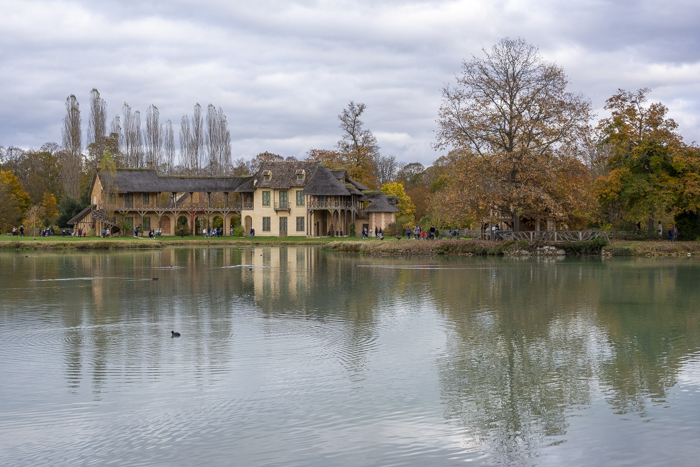
Les Lalanne – Two Fantastic Sculptors.
Les Lalanne (no plural s) describes the French artist team of François-Xavier Lalanne (1927–2008) and Claude Lalanne (1924–2019).
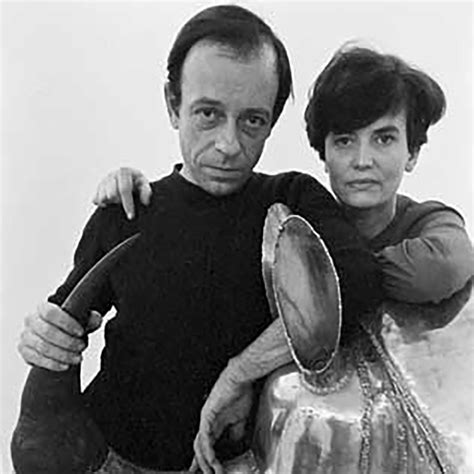
Claude Lalanne (1924–2019) was born in Paris and studied architecture at the École des Beaux-Arts and at the École des Arts Décoratifs. She was involved in the artists’ community in Montparnasse, Paris and became friends with American artists Larry Rivers and Jimmy Metcalf. They helped her develop the art of electroplating, a technique that appeared in the 19th century, which consists of plunging objects into a copper bath to immortalise their shape.
Francois-Xavier Lalanne was born in Agen, France, and at age 18, he moved to Paris and studied sculpture, drawing and painting at l’Académie Julian. This private school, founded in 1867, was famous for the number and quality of artists it produced during the great period of effervescence in the arts, in the early twentieth century.
In 1948, his day job was as an attendant at the Louvre museum in the Oriental Antiques section. Having completed his mandatory military service, Francois-Xavier rented a studio in Montparnasse, next door to his sculptor friend Constantin Brâncuși, who introduced him to up and coming artists, such as Max Ernst, Man Ray, Marcel Duchamp, and Jean Tinguely.
The couple met at his first gallery show in 1952. A show that marked the end of his career as a painter, as he and his wife Claude began their career as sculptors together of fanatsy animals.
Side By Side – Separate Studios.
The Lalannes did not form a duo, and did not work together but side by side:
Living together, creating separately.
While François-Xavier favoured sculpting animals, Claude preferred vegetation. The themes explored by the two collectively went against the current trend of Abstract art in the 1960s. The couple believed that:
The greatest art is the art of living things.
Claude Lalanne’s personal work often manifested itself in the form of decorative flora and fauna, drawing from Surrealism and Art Nouveau. She also created jewellery, often moulded from twisted flowers, leaves, and branches made in copper and gilt bronze. Her unique style of decorative design and fine art resonated with the fashion world, with many of her pieces collected by leading fashion designers, including Yves Saint Laurent. She was the only artist with whom he collaborated throughout his career.
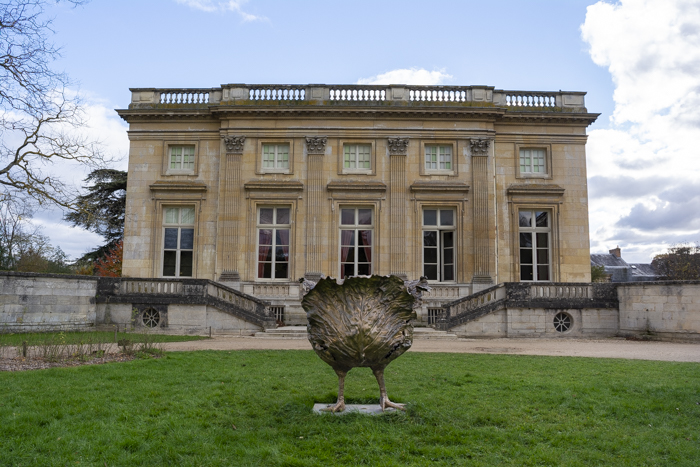
The couple’s first joint exhibition included Francois-Xavier’s famous rhinoceros desk, Rhinocrétaire, and Choupatte Claude’s cabbage with chicken legs sculpture. Similar themes by Les Lalanne have seen their work classified as an ode to Surrealism and Art Nouveau.
Choupatte is one of Claude’s best known sculptures and she recreated it many times in different sizes and finishes.
Fantasy Brings Fame and Fortune.
Claude Lalanne became known to the general public in France in 1976, when the infamous singer Serge Gainsbourg passed in front of a gallery where her sculpture l’Homme à Tête de Chou (1968) was exhibited. He is reputed to have bought it on the spot. Later, with Claude’s permission, he made a well-known song about it and put a photo of the work in his garden, rue Verneuil, on the cover of a new album.
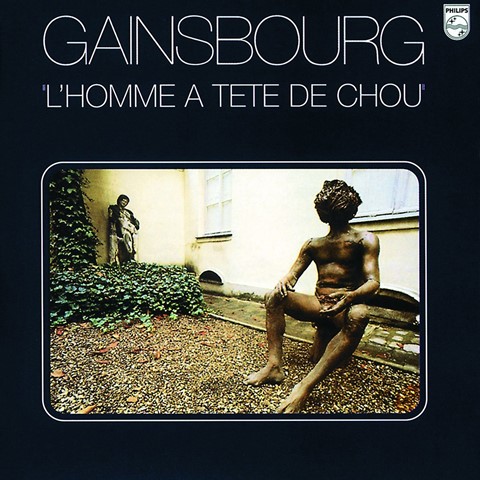
A Menagerie Of Fantasy Animals.
The sculptures of Les Lalanne have been exhibited all over the world and a notable event brought their menagerie to New York City. In 2009, the artist duo participated in Park Avenue Recession Art, developed by the Paul Kasmin Gallery, the New York City Parks Department’s public-art division. The project comprised a series of sculptures placed between crosswalks on Park Avenue.
Many of the same works made up the outdoor exhibition that I photographed at Versailles, featuring a bronze apple, sheep, a fish, a pensive great ape and more ……
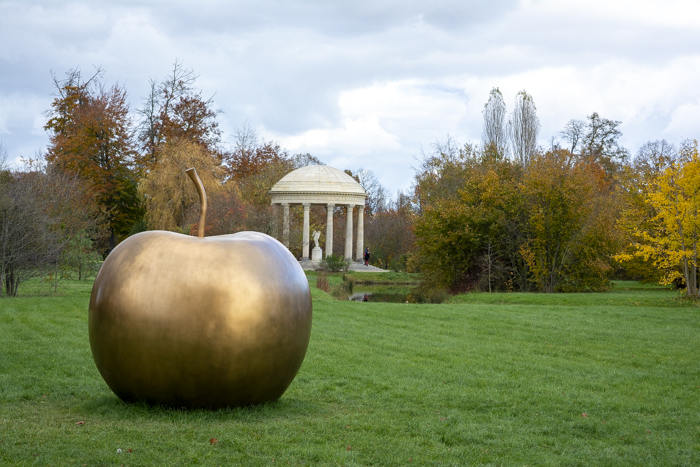
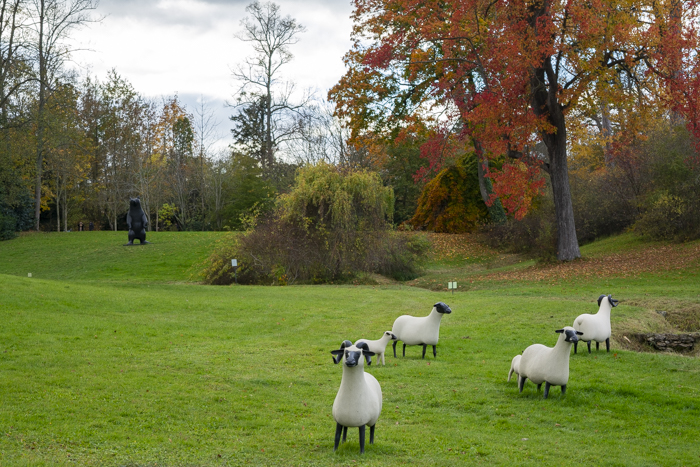
François-Xavier Lalanne’s sheep are emblematic of his practice. Created for the first time in 1965, they have known several versions: in stone, bronze, wood or epoxy concrete, they are sometimes intended for interiors and covered with a woollen fleece. Here, some are horned, and two small lambs have been added to the adult-sized animals.

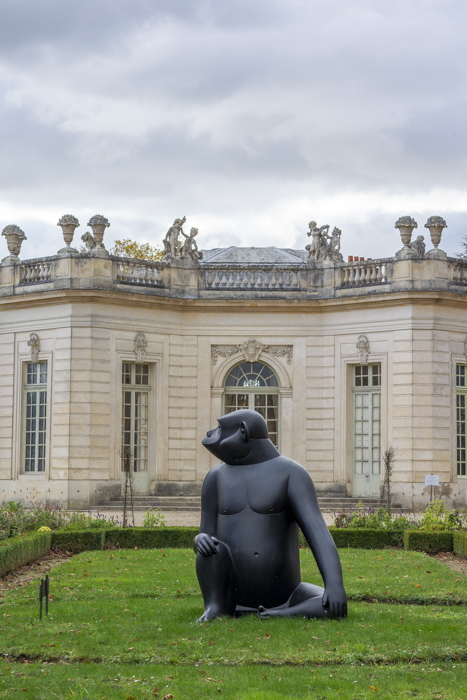
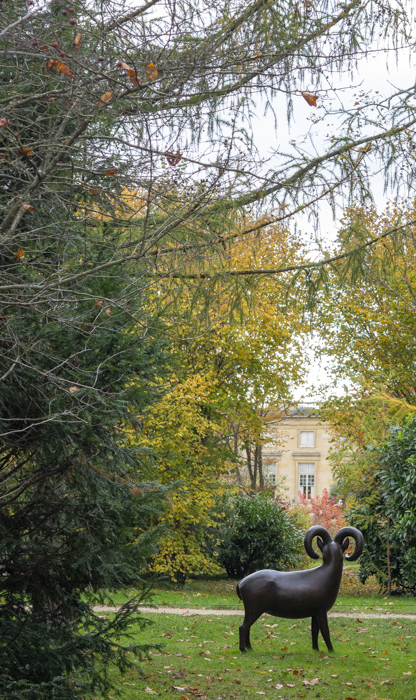
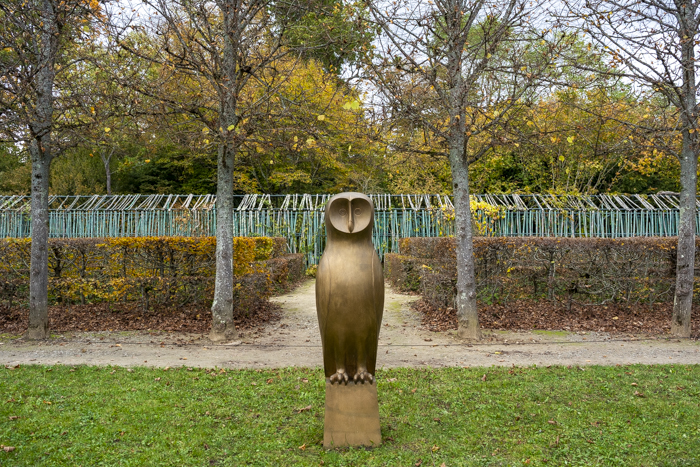
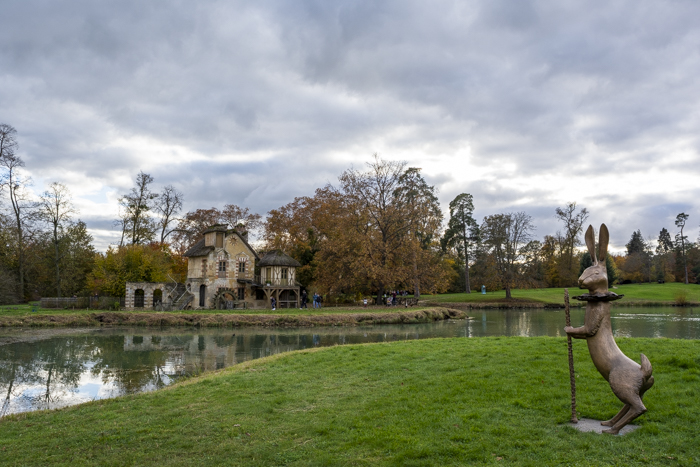
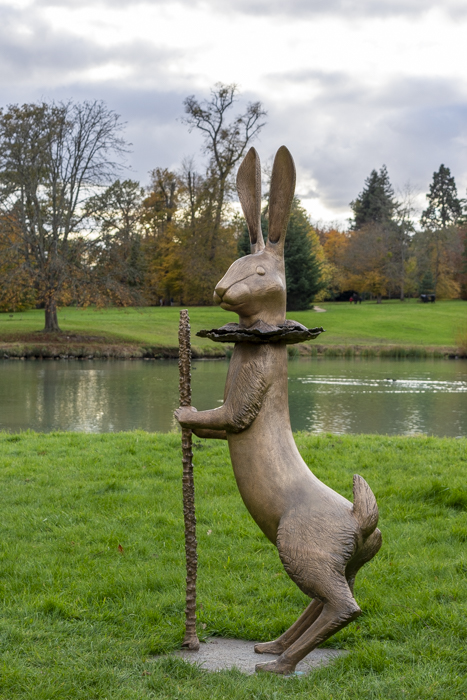
Perhaps, like me, this rabbit reminds you of someone :).
Standing on his two hind legs, he leans on a long stick that looks like a very thin tree trunk, and carries around his neck a ruff collar, made of fossilised cabbage leaves. With his lively look, ears stretched towards the sky, he seems to be on the lookout and reminds us of the hurried rabbit from Alice’s Adventures in Wonderland (1865) by Lewis Carroll. This is the strength of the art of Les Lalanne, and Claude more particularly, whose work evokes fairy tales and childhood wonder.
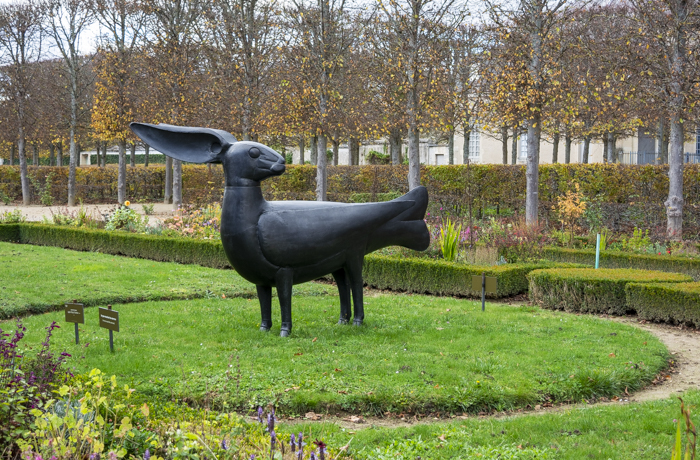
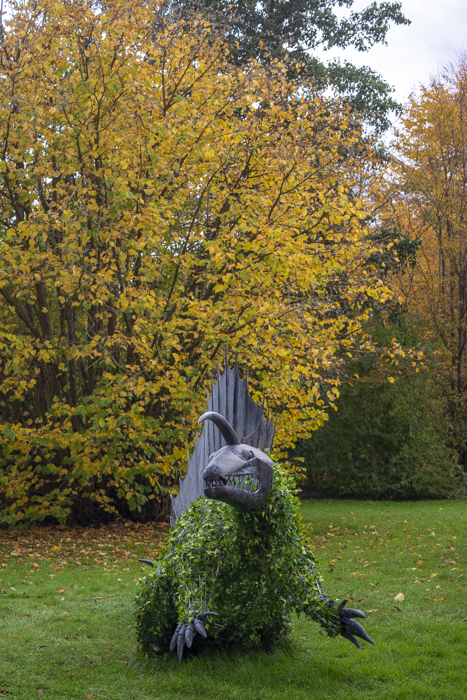
A FULL LIFE À DEUX.
Together since the beginning of the 1950s, photographs of their workshop in Ury, near Fontainebleau, south of Paris, show a daily life dedicated to the duel with their materials. The Lalannes lived through the second half of the 20th century as poetic sculptors and pursued, each in their own way and despite fashions, the search for surreal, facetious and fanciful forms. Their work is unique, both in its style and appeal to a wide audience.
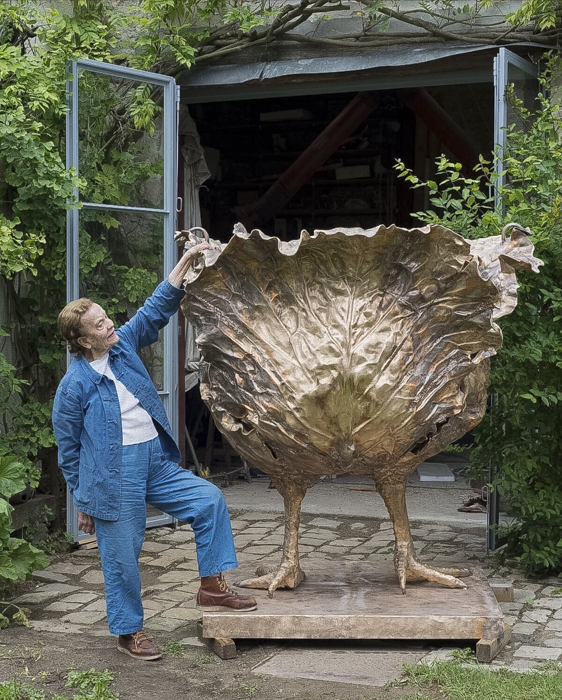

I definitely have a soft spot for the rabbit. Which is your favourite sculpture? Let me know in the comments.
Thank you for visiting,
Henrie
XO.
